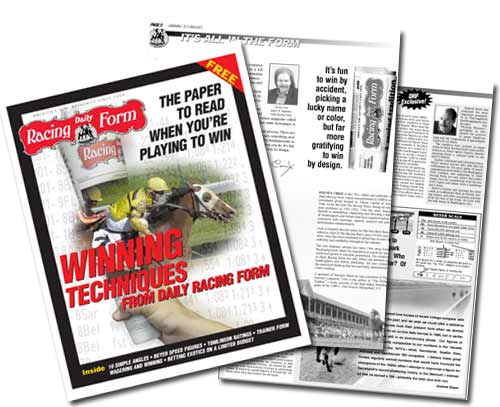|
|
|
|
*Meriwether Lewis Clark, Jr built Churchill Downs and started the Kentucky Derby, he committed Suicide April
22, 1899, 12 days before the Kentucky Derby, after losing money in the stock market crash of 1893.
|
*13 of the 15 riders in the first Kentucky Derby were African-American |
*African-American jockeys won 15 of the Derby\'s first 28 runnings. |
*The Derby is frequently referred to as "The Run for the Roses,"
because a lush blanket of 554 red roses is awarded to the Kentucky Derby winner each year. The tradition is as a result of New York socialite E. Berry Wall presenting roses to ladies
at a post-Derby party in 1883 that was attended by Churchill Downs founder and president, Col. M. Lewis Clark. This gesture
is believed to have eventually led Clark to the idea of making the rose the race\'s official flower. However, it was not until
1896 that any recorded account referred to roses being draped on the Derby winner. The Governor of Kentucky awards the garland and the trophy.
|
*Donerail (1913) becomes the longest shot to win the Derby,
paying $184.90, $41.20 and $13.20
|
*War-time travel restrictions result in a "Street Car Derby," with
no out-of-town tickets to the race sold. But 65,000 turn out to see Count Fleet (1943) , a 2-5 choice, win easily
|
*Government ban of all horse racing in January threatens to break
the consecutive string of Derbys at 70, but VE Day is followed by a May 8 announcement lifting the ban and the 71st Derby
is run June 9, 1945.
|
*The first national telecast of the Kentucky Derby aired May 3,
1952
|
*1968 - First Derby winner disqualification sees the purse taken
from first-place finisher Dancer\'s Image because post-race testing revealed an illegal medication. Second-place finisher Forward
Pass is declared the winner. Richard Nixon was a presidential candidate making his first Derby appearance that day, hmm.
|
*Secretariat (1973) breaks the magic two-minute plateau for the
Derby, winning the 99th Run for the Roses in 1:59 2/5. He goes on to become the first Triple Crown winner in 25 years
|
*An all-time record
U.S. Thoroughbred racing crowd of 163,628 jams the Downs to see Cannonade top a field of 23 and win the 100th Derby, 1974.
|
*In 1942, seven of the first eight finishers in the Kentucky Derby
were owned by women. The exception was Valdina Orphan, who finished third.
|
*The Mint
Julep, an iced drink consisting of bourbon, mint and a sugar syrup is the traditional beverage of the race
|
*"Millionaire\'s Row" refers to the expensive box seats that attract
the rich, the famous and the well-connected. Women appear in fine outfits lavishly accessorized with large, elaborate hats
|
*Three fillies have won: Regret in 1915, Genuine Risk in 1980 and
Winning Colors in 1988
|
*In 1929, Clyde Van Dusen, the horse, won for Clyde Van Dusen, the
trainer.
|
*Eighteen horses have brought perfect records into the race. Only
five left undefeated. They are: Regret (1915) Morvich (1922) Majestic Prince (1969) Seattle Slew (1977) Smarty Jones (2004)
Odds the Derby winner was born in Kentucky: 1.3-1 Ninety-seven of the 130 winners were born in the Bluegrass state.
|
*Willie Simms rode in two Derbys, and won them both — aboard
Ben Brush in 1896 and Plaudit in 1898. Simms is the only African-American rider to win all three races that became the Triple
Crown.
|
*Assault, the Texas horse, won the Triple Crown in 1946, he
wasn\'t the favorite in any of the 3 races.
|
*In 1779, Edward Smith-Stanley, the 12th Earl of Derby, and Sir
Charles Bunbury saw the first running of the Epsom Oaks in England. They were incited to start their own race the next year.
They flipped a coin for naming rights, Lord Derby won.
|
*When Kentuckians stoked up their own version of the race in 1875,
they used the Epsom Derby as the model for a race they called the Kentucky Derby.
|
*The only foreign-based horse to win the Derby was Canonero II,
the 1971 upset winner from Venezuela.
|
*In 1922, the Kentucky Derby and the Preakness Stakes were run on
the same day.
|
|
|

|
|

|
|
|
The paper to read when you're playing to
win
|
|
|